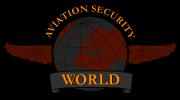The pleasures and risks in civil aviation
In the South Carolina Associated Press “Contribution Rules” The Associated Press members (including local TV stations and local newspapers) statewide want (stories on) train wrecks, airplane crashes, drownings, unusual deaths and fatalities.” The AP rules state that “non-fatal auto or boating accidents, unless it’s unusual” are “not of statewide interest” to AP members.
It is appropriate for AP to set these priorities. The public wants these stories.
The explosion of the airship Hindenburg on May 3, 1937 while mooring at Lakehurst, N.J., killing 37 people, is a classic aviation story in radio and print journalism history. The disappearance and presumed death of aviator Amelia Earhart two months later, July 2, 1937, while en route from Lae, New Guinea, to Howland Island in the Pacific, continues to get media attention.
Regardless of aviation accidents, young people are attracted to small aircraft, eager to fly. The Experimental Aircraft Association has given well more than one million children their first flight in its Young Eagles program, including many in South Carolina.
The South Carolina Wing of the Civil Air Patrol has given thousands of its cadets, ages 18 to 21, their first flight in gliders and powered aircraft. The Civil Air Patrol nationally has given millions of young people, including Air Force ROTC cadets, initial flight orientation since its founding on Dec. 1, 1941.
Many who have flown in these programs became military and commercial airline pilots. Some have become volunteer emergency service pilots in the Civil Air Patrol or Angel Flight. Others bought Mooney or Cessna aircraft and fly today from airports like Columbia Owens Downtown Airport, where Bauer’s Mooney was based.
Thousands of well-qualified pilots are standing in line to fly in the right seat for any airline at entry-level jobs paying less than $20,000 a year.
The first thing the aviation industry does when there is a mishap is to document the chain of events leading to the mishap. What is the cause of the mishap? What can be done to prevent this kind of mishap from occurring in the future? The first rule of pilots is to learn from their own mishaps and the mishaps of others.
The safety emphasis in aviation has led to a safety record that is the envy of industries including health care, nuclear power and chemical products. The aviation model of safety and quality is being implemented by hospitals throughout the United States, emphasizing the need for checklists, standardization of training, rotating teams and the right of anyone on the team to say “stop and land” when anything looks unusual. A nurse in the surgical suite can call a timeout in the operation if he or she perceives a problem that could endanger the patient or a surgical team member.
Hospitals, aircraft, nuclear power plants, trains, cars, motorcycles, boats, medicines and chemicals will be a part of our lives in America for years to come. Each has an inherent risk of death or injury. But there are also inherent benefits.
I choose to fly as a passenger in an airliner and as a pilot in single-engine aircraft because I know that pilots and flight crew members on airliners and in Civil Air Patrol aircraft are required to drill regularly in emergency procedures. I expect emergencies to occur and prepare to respond appropriately. I fly without fear but with special respect and attention to every detail of those aircraft mishaps that get featured on the TV news and on the front page of this newspaper. All pilots can learn from that. Doctors and nurses can learn a lesson as well.
The State









0 Comments:
Post a Comment
<< Home